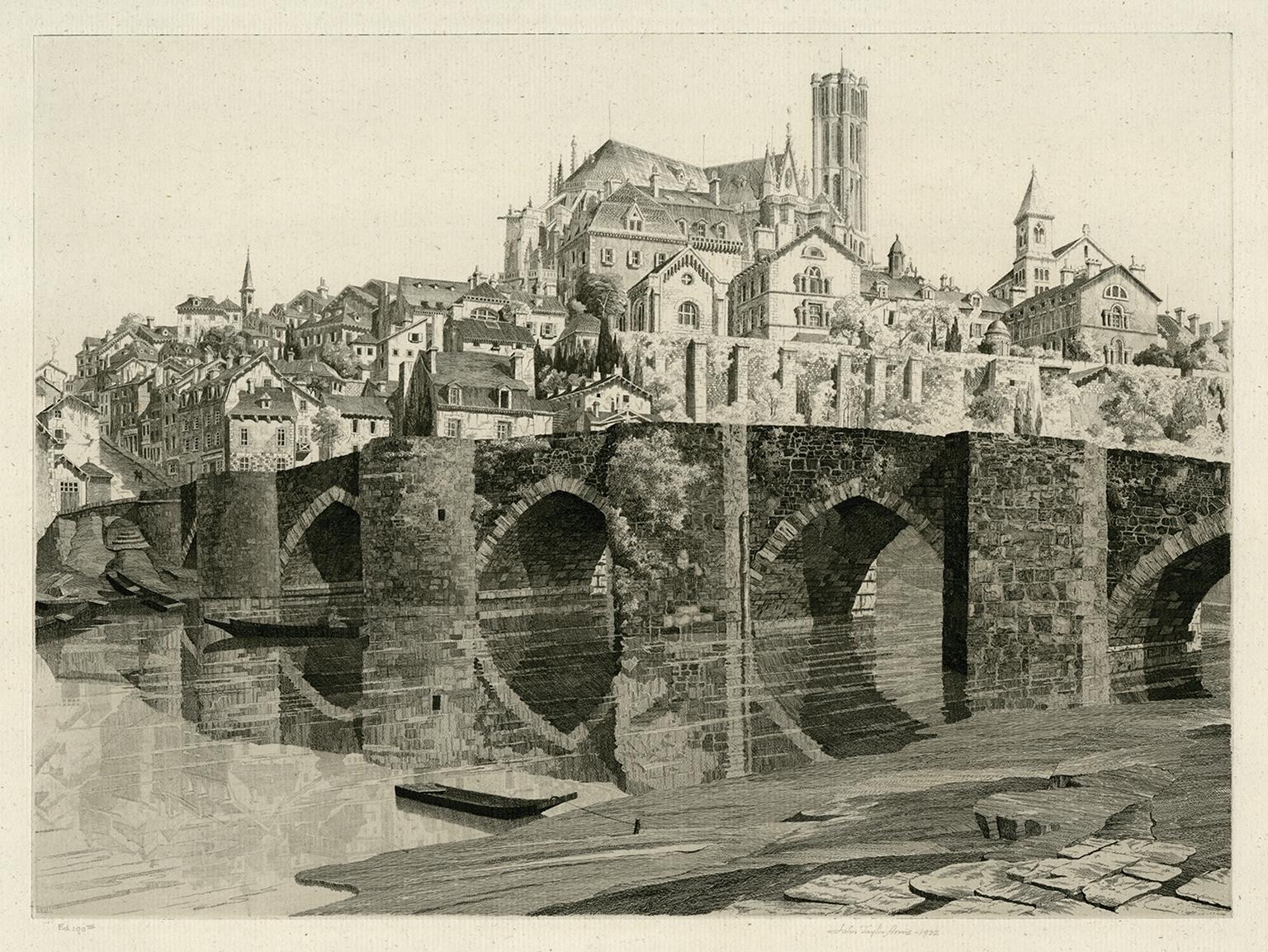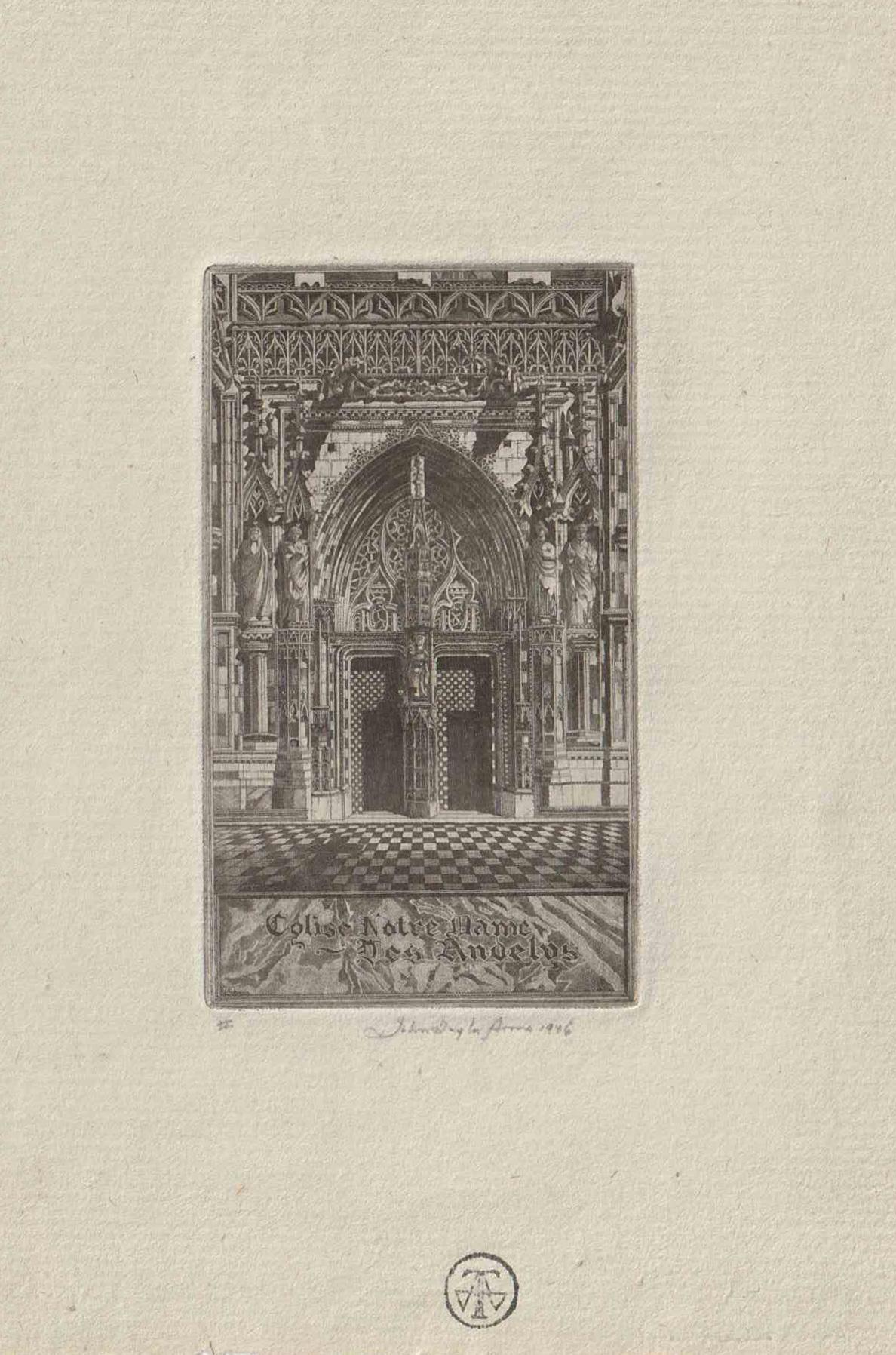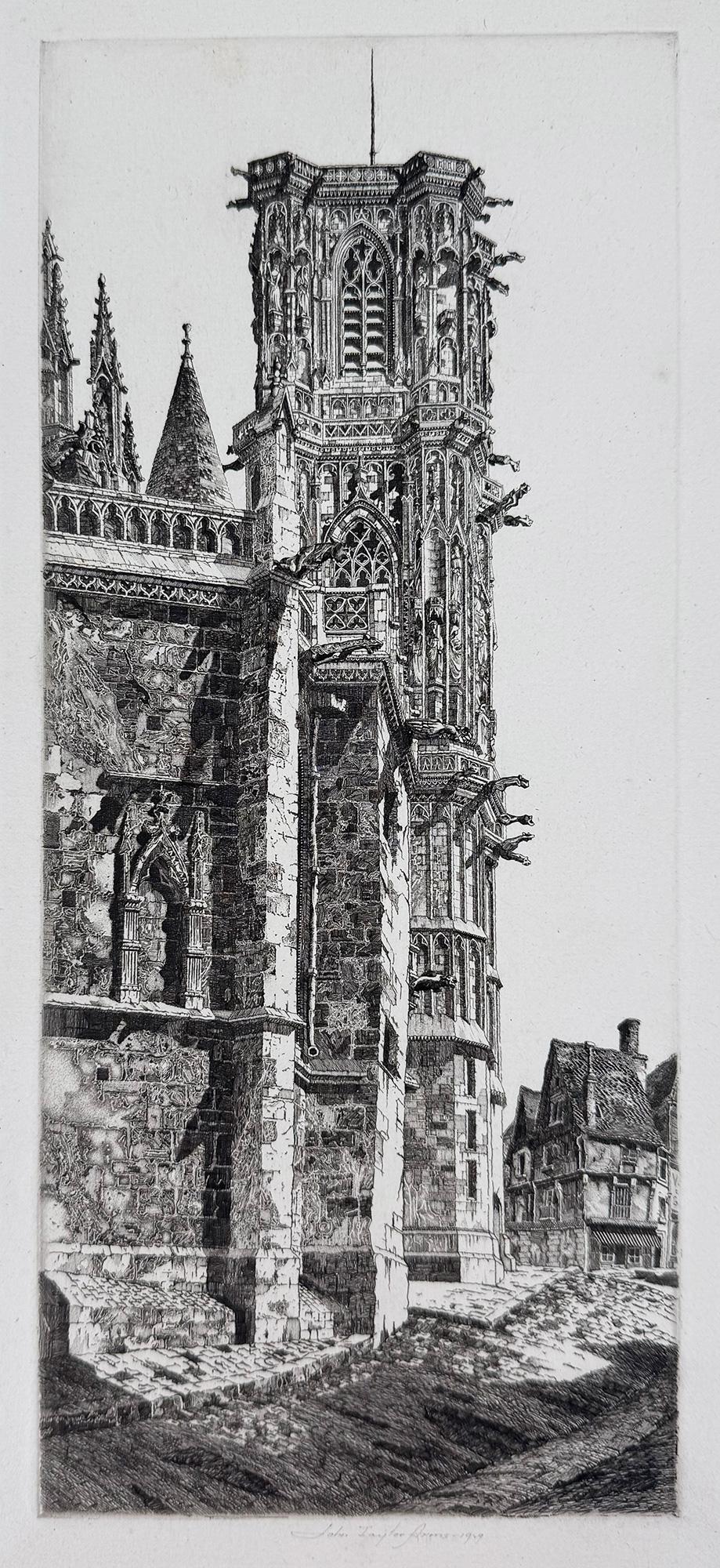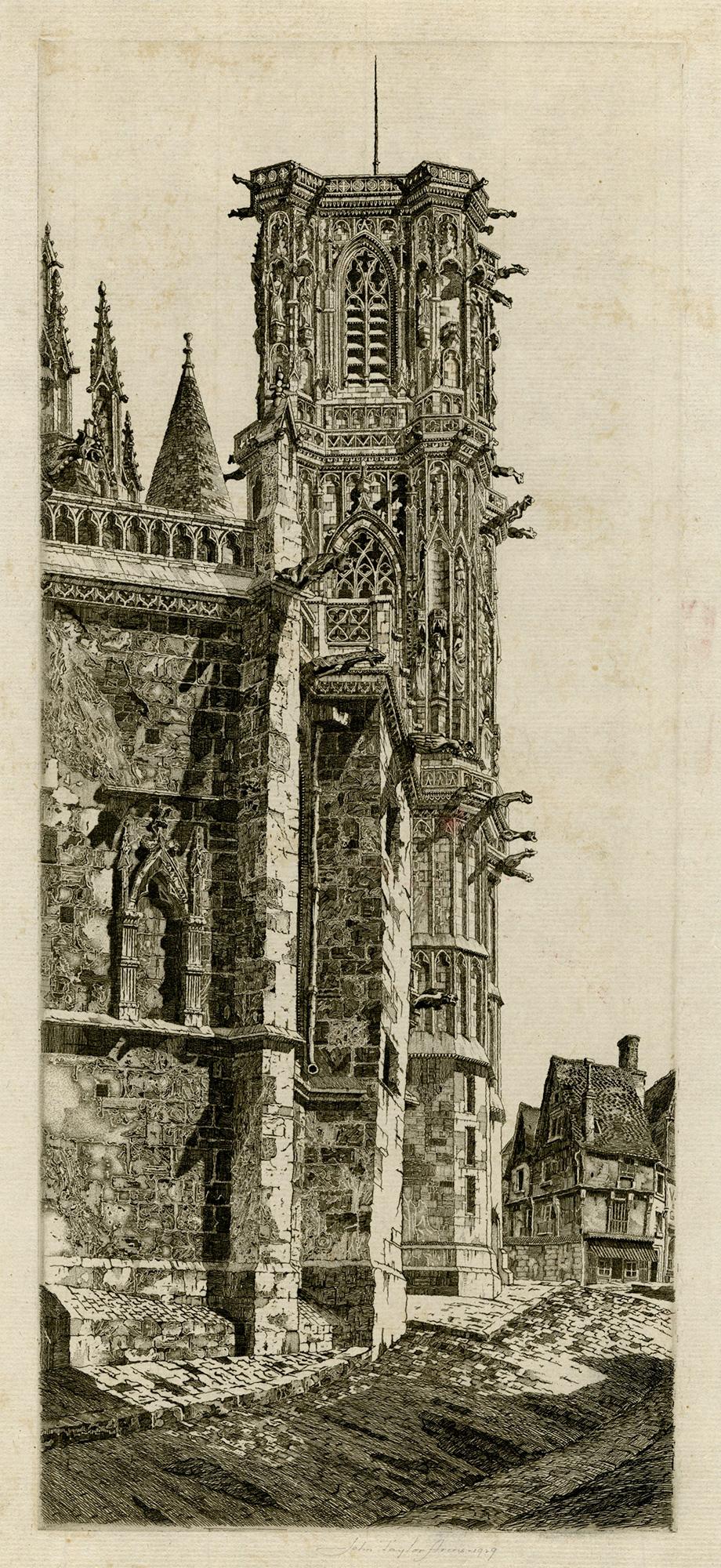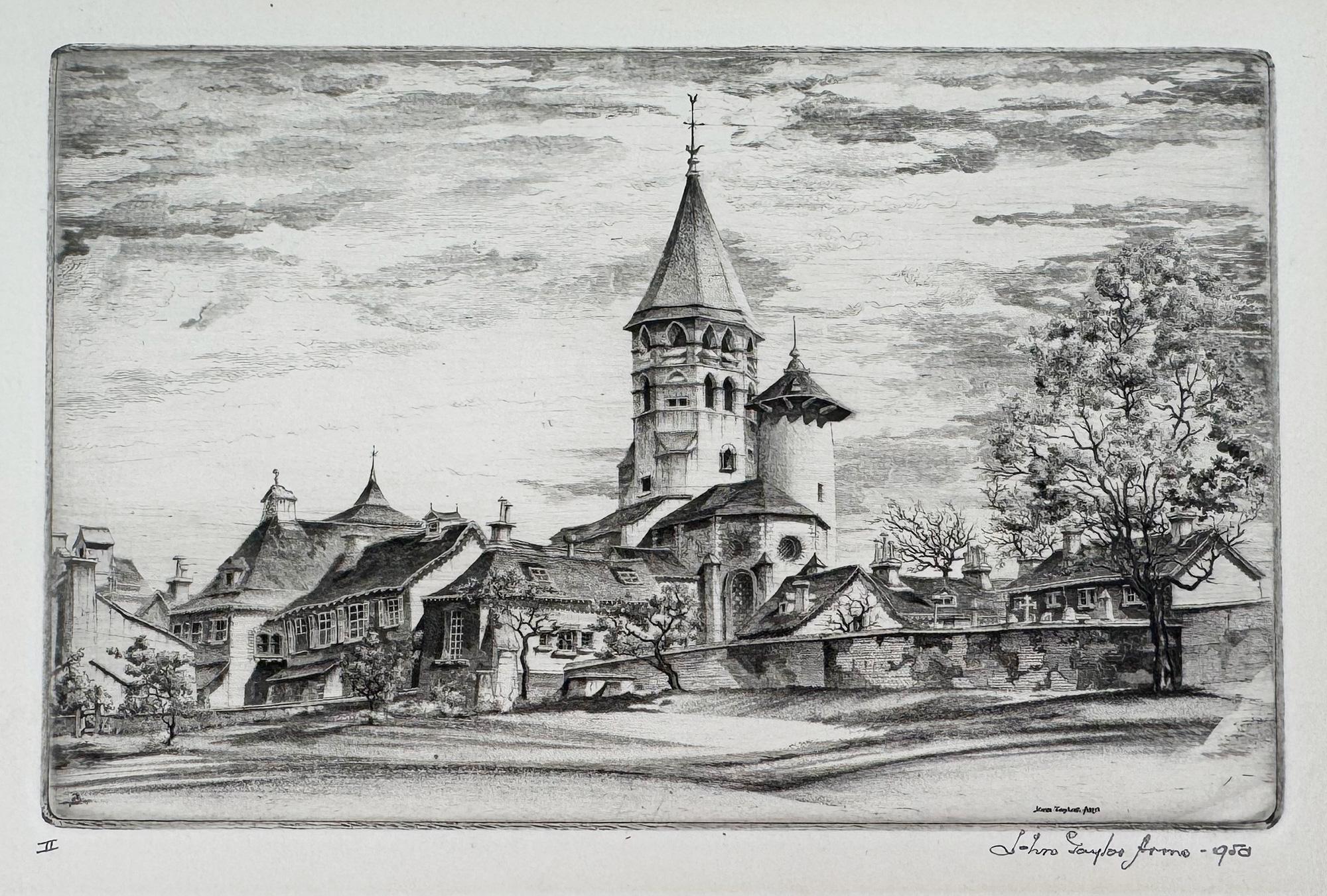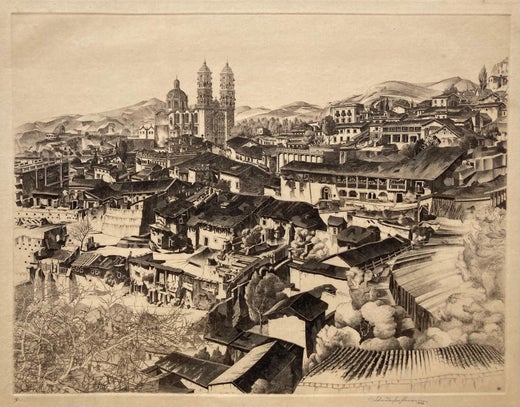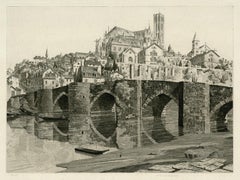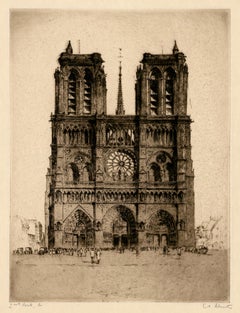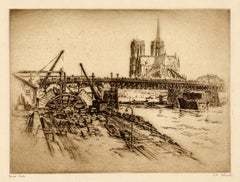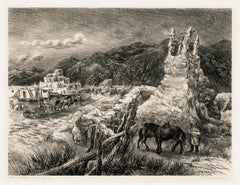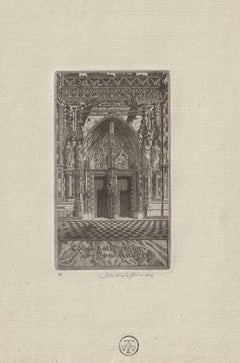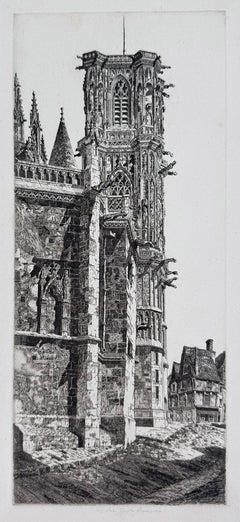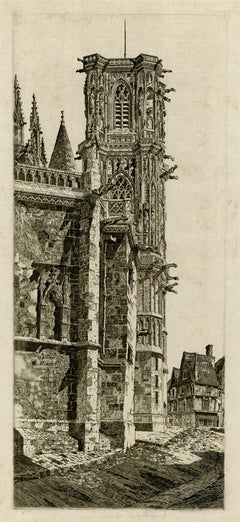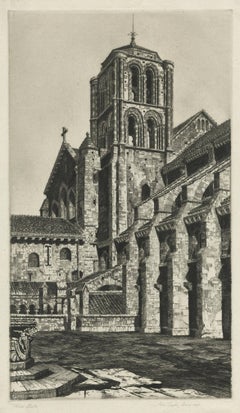'Rocamadour' (French Church Series # 10), etching, 1927, edition 50, Fletcher 186. Signed, dated, and annotated 'First State' in pencil. Titled and dated 'Rocamadour 1926' in the plate, bottom right. A superb, finely detailed impression, in dark brown ink, on buff laid Japan paper, with full margins (1 to 1 7/8 inches), in excellent condition.
Image size 13 3/4 x 10 inches (349 x 254 mm); sheet size 15 3/4 x 13 5/8 inches (400 x 346 mm). Matted to museum standards, unframed.
Literature: illustrated in Dorothy Noyes Arms, 'Churches of France', The Macmillan Company, 1929.
Impressions of this work are in the permanent collections of the Blanton Museum of Art, Chrysler Museum of Art, Cleveland Museum of Art, Davis Museum (Wellesley), McNay Art Museum, Metropolitan Museum of Art, Rhode Island School of Design Museum, and the Whitney Museum of Art.
ABOUT THE SUBJECT
Rocamadour is a small clifftop village in south-central France. It is known for the Cité Réligieuse complex of religious buildings, accessed via the Grand Escalier staircase. It includes the Chapelle Notre-Dame, with its Black Madonna statue, and the Romanesque-Gothic Basilica of St-Sauveur.
ABOUT THE ARTIST
“John Taylor Arms will live on and on and future generations centuries from now will marvel at his work... . As a friend and as a man, he fully matched his superb work.” —John Winkler, printmaker
Born in Washington, D.C. in 1887, John Taylor Arms attended the Lawrenceville School and began the study of law at Princeton University. In 1907, he transferred to the Massachusetts Institute of Technology and took up the study of architecture. Arms evolved his unique drafting style, with its highly realistic, precise detail and exquisitely rendered effects of light, from his experience and practice as an architectural student. He graduated in 1911 and completed a master’s degree the following year. He then worked as a draftsman with the well-known Carrere and Hastings Company in New York.
In 1913 Arms was given a hobbyist’s etching set, and he began to dabble with copperplate and acid. In 1915, after copying a handful of prints by Jongkind and other Etching Revivalists, Arms created his first original etching. His early experiments were picturesque views of European villages, reflecting the influence of Whistler. He inked and printed several of these plates in color in the manner of Charles Mielatz. Arms formed a short-lived partnership with Cameron Clark, specializing in domestic architecture. In 1916 he joined the United States Navy. Travels to Europe fueled his fascination with French architectural printmakers, and after the war, he devoted himself wholly to printmaking.
Inspired to capture the romantic ambiance and spiritual grace of Gothic architecture, Arms developed a plan to represent in etching all the major Gothic cathedrals of Europe. His thorough knowledge of architecture with his remarkably precise draftsmanship and exceptional command of the medium made his prints fascinating and broadly appealing.
In the 1920s, his most productive period, Arms traveled throughout Europe and produced almost half of his oeuvre of nearly 450 prints. Two travel books written by his wife were illustrated with heliographic reproductions of his intaglio prints.
In the 1930s Arms became a prominent champion of printmaking. He was the author of the 'Handbook of Print Making and Print Makers,' and as the editor of Prints magazine, he produced numerous articles of opinion and criticism and reviews of books and exhibitions. He was also a prominent member and officer of many print organizations, including president of The Society of American Etchers, where he drafted eloquent essays in support of the artists he commissioned. In 1938 and 1939, Arms was a visiting lecturer at Wesleyan University and spoke widely on printmaking history for many years.
Arms’ work was widely published and was the subject of museum exhibitions throughout his career and following his death. He was the recipient of numerous print awards, including from The Albany Print Club, The American Insititute of Graphic Arts, Artists Equity Association, Arts and Crafts Association, Audubon Artists, Brooklyn Society of Etchers, Chicago Society of Etchers, International Printmakers, Miniature Print Society, National Academy of Design, National Arts Club, National Print and Drawing Exhibition, and the Society of American Etchers.
Arms’ graphic works are included in many museum collections, including the British Museum, Brooklyn Museum, Chrysler Museum of Art, Cleveland Museum of Art, Davis Museum at Wellesley College, De Young, Fine Arts Museums of San Francisco, Georgetown University Library, Library of Congress, Metropolitan Museum of Art, National Gallery of Art, New York Public Library, Princeton University Art Museum, Smithsonian American Art Museum, Spencer Museum of Art, University of Iowa, and the University of Texas.
